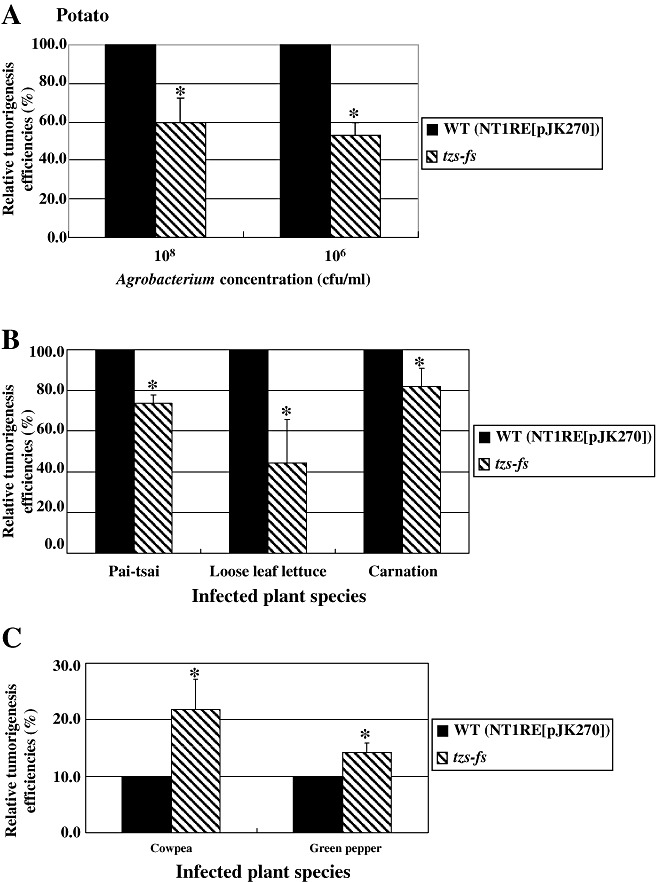Figure 5.

The tzs‐fs mutant decreased virulence on potato tubers, pai‐tsai, loose leaf lettuce and carnation and caused more plants to produce tumours on cowpea and green pepper. Potato tuber discs (A), stems of pai‐tsai, loose leaf lettuce and carnation (B), stems of cowpea and green pepper (C) were infected with the wild‐type NT1RE(pJK270) and tzs‐fs mutant as indicated. Tumours were scored 5 weeks after infection. The tumorigenesis efficiency of potato tuber discs (A) infected with the wild type was approximately 20–30 tumours per disc, and those of pai‐tsai, loose leaf lettuce and carnation (B) were approximately 40%–90% of stems forming tumours in each experiment. The tumorigenesis efficiency of the wild‐type shown in (A) and (B) was set at 100% and that of the mutant is shown relative to that of the wild‐type strain. The transformation efficiency of stems of cowpea and green pepper (C) infected with the wild‐type Agrobacterium tumefaciens strain NT1RE(pJK270), with approximately 10%–30% of stems forming tumours in each experiment, was set at 10% and that of the mutant is shown relative to that of the wild‐type strain. Mean values of the tumorigenesis frequencies from at least three independent experiments are shown with standard errors. An asterisk above each mean represents a statistically significant difference between the wild‐type and various tested strains based on analysis of variance (anova) and pairwise Student's t‐test. P < 0.05 for all significant differences between strains.
